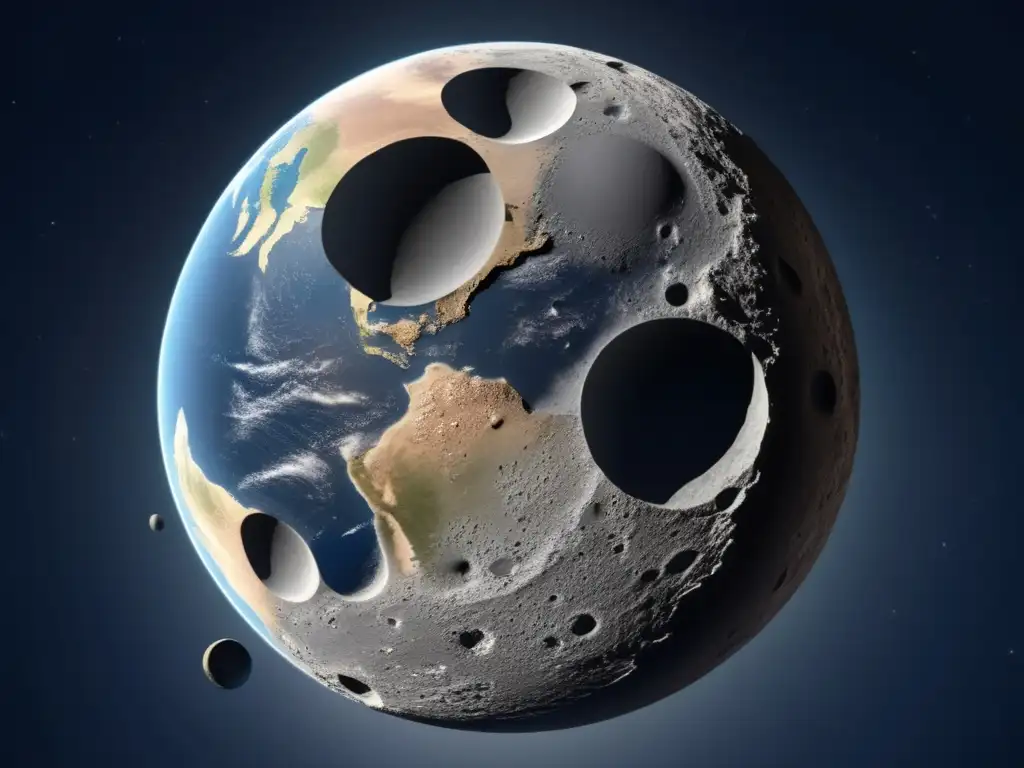An In-depth Study Of Cruithne: Earth's Second Moon?

Introduction
Cruithne, also known as 3753 Cruithne, is a small asteroid that has gained notoriety for its peculiar orbit around the sun. Some experts argue that its path is so close to Earth's that it could be considered as Earth's second moon. In this article, we will delve into the mysteries surrounding Cruithne and explore its significance in the world of asteroids.
The Discovery of Cruithne

Early Observations
Cruithne was first observed in 1986 by the astronomer Duncan Waldron from the University of Arizona. However, it was initially believed to be an ordinary asteroid with a regular orbit around the sun. It wasn't until 1997 that the asteroid's true nature was revealed.
Discovery of the Horseshoe Orbit
In 1997, scientists discovered that Cruithne's orbit was not as stable as previously thought. Instead of following a standard elliptical path around the sun, Cruithne was found to have a horseshoe-shaped orbit that brought it very close to Earth. This discovery caused many to speculate on whether or not Cruithne could be classified as a second moon for Earth.
Debates over Moon Classification
The debate over whether or not Cruithne should be classified as a second moon for Earth has been ongoing since its discovery. Some experts argue that its orbit is not stable enough to be classified as a moon, whereas others argue that its proximity and regularity make it a candidate for the title.
The Orbit of Cruithne

The Horseshoe-Shaped Orbit
Cruithne's orbit is unique in the solar system due to its horseshoe shape. This means that it doesn't follow a typical path around the sun, but rather loops around in a way that brings it very close to Earth before looping back out again. This loop takes 770 years to complete.
Closest Approach to Earth
During its loop around the sun, Cruithne comes very close to Earth. While it never makes contact with our planet, it does come within 30 times the distance between Earth and the moon. This close proximity has led some to speculate on the asteroid's potential significance for future space exploration.
Stable Orbit?
While some experts argue that Cruithne's orbit is not stable enough to be considered a second moon for Earth, others have pointed out that its horseshoe-shaped path has been stable for at least one million years. This suggests that it may continue to loop around the sun in this manner for many more years to come.
Significance of Cruithne

Potential for Space Exploration
Because of its close proximity to Earth, some experts have argued that Cruithne could be a valuable resource for future space exploration. Its orbit makes it easier to reach than most other asteroids, and its relative stability could make it an ideal target for mining operations or even human settlements in the future.
Cultural Significance
Cruithne has also gained cultural significance over the years, particularly in Scotland where it is believed to be the inspiration for the name of the ancient Pictish tribe, the Cruithne. This has led to increased interest in the asteroid and its potential importance not just for science, but also for history and culture.
Scientific Research
Cruithne has been the subject of much scientific research since its discovery. This research has helped us to better understand the nature of asteroids and the unique properties that they possess. It has also spurred interest in the wider field of astronomy and planetary science, leading to new discoveries and breakthroughs.
Frequently Asked Questions

-
Does Cruithne pose a threat to Earth?
No, Cruithne does not pose a threat to Earth. While it comes very close to our planet, its orbit is stable and there is no danger of it colliding with us.
-
Is Cruithne the only asteroid with a horseshoe-shaped orbit?
No, there are other asteroids with horseshoe-shaped orbits in the solar system. However, Cruithne is one of the most well-known due to its proximity to Earth.
-
What is the significance of Cruithne's horseshoe-shaped orbit?
Cruithne's horseshoe-shaped orbit is significant because it makes the asteroid easier to reach for future space exploration missions. It also suggests that this type of orbit may be more common in the solar system than previously thought.
-
Can Cruithne be considered a second moon for Earth?
The classification of Cruithne as a second moon for Earth is still up for debate among experts. While some argue that its orbit is not stable enough to be considered a moon, others believe that its proximity and regularity make it a candidate for the title.
-
What has research on Cruithne taught us about asteroids?
Research on Cruithne has taught us that asteroids can have unique and unexpected properties, such as horseshoe-shaped orbits. This research has helped us to better understand the nature of these celestial bodies and their potential significance for space exploration and scientific research.
Conclusion
In conclusion, Cruithne is a fascinating asteroid with a unique place in the solar system. Its horseshoe-shaped orbit and close proximity to Earth have led to much speculation and research over the years, and its potential significance for future space exploration is still being explored. Whether or not it can be classified as Earth's second moon is still up for debate, but what is clear is that Cruithne has contributed greatly to our understanding of asteroids and their role in our universe.
We encourage readers to share their thoughts on this topic and to continue to engage with www.asteroidrealm.com for more informative content on asteroids and other celestial bodies.
Additional Resources

For further reading on the topic of Cruithne and asteroids in general, we recommend the following resources:
- Space.com's article on Cruithne
- NASA's in-depth page on Cruithne
- NASA Jet Propulsion Laboratory's news on Cruithne
 Unveiling Sedna: A Profile Of One Of The Most Distant Asteroids Known
Unveiling Sedna: A Profile Of One Of The Most Distant Asteroids Known Hebe: A Source Of Meteorites? – Understanding Its Scientific Relevance
Hebe: A Source Of Meteorites? – Understanding Its Scientific Relevance Kalliope And Linus: An Asteroid And Its Moon
Kalliope And Linus: An Asteroid And Its MoonIf you want to discover more articles similar to An In-depth Study Of Cruithne: Earth's Second Moon?, you can visit the Asteroid Profiles category.
Leave a Reply

Articulos relacionados: